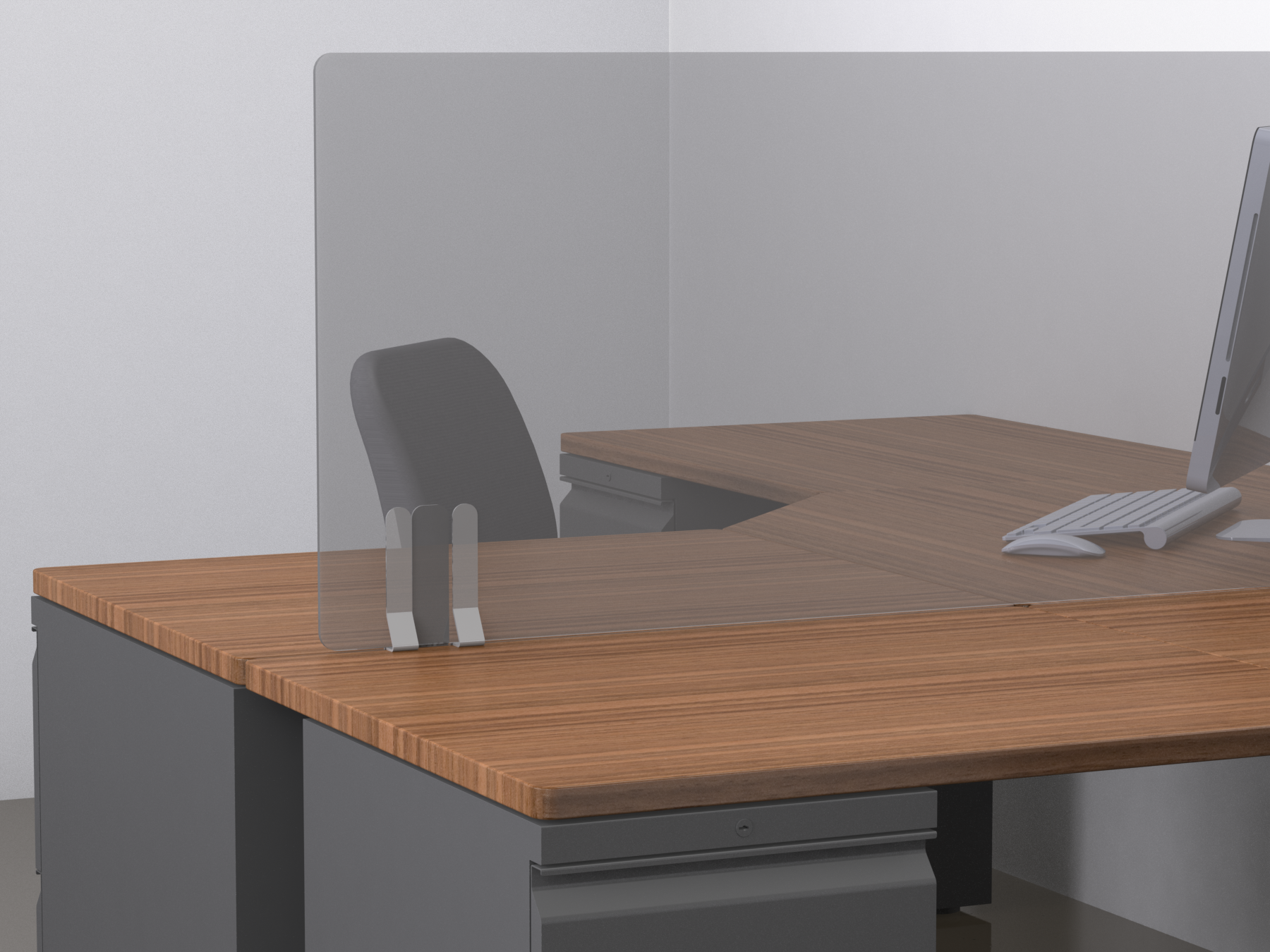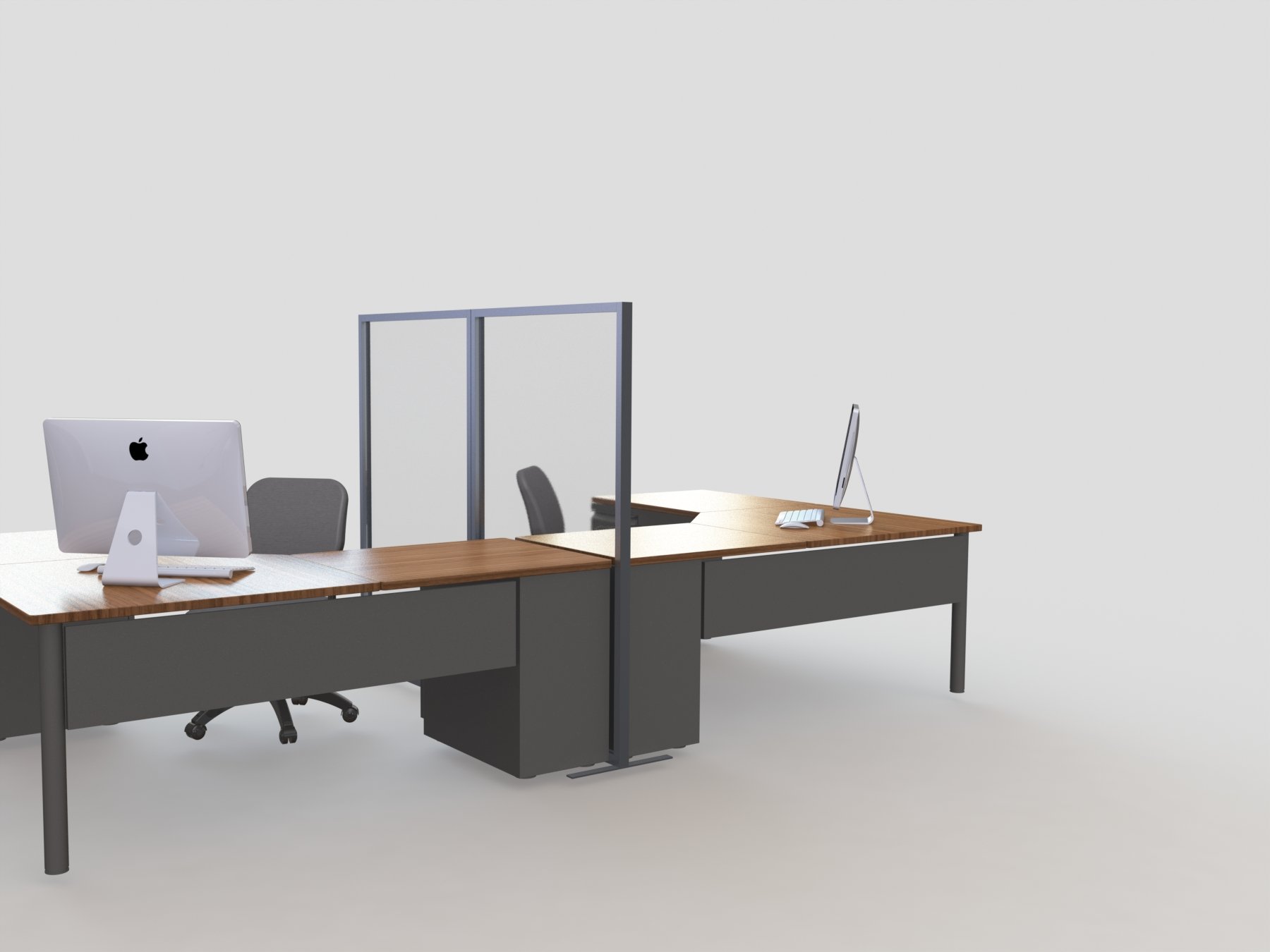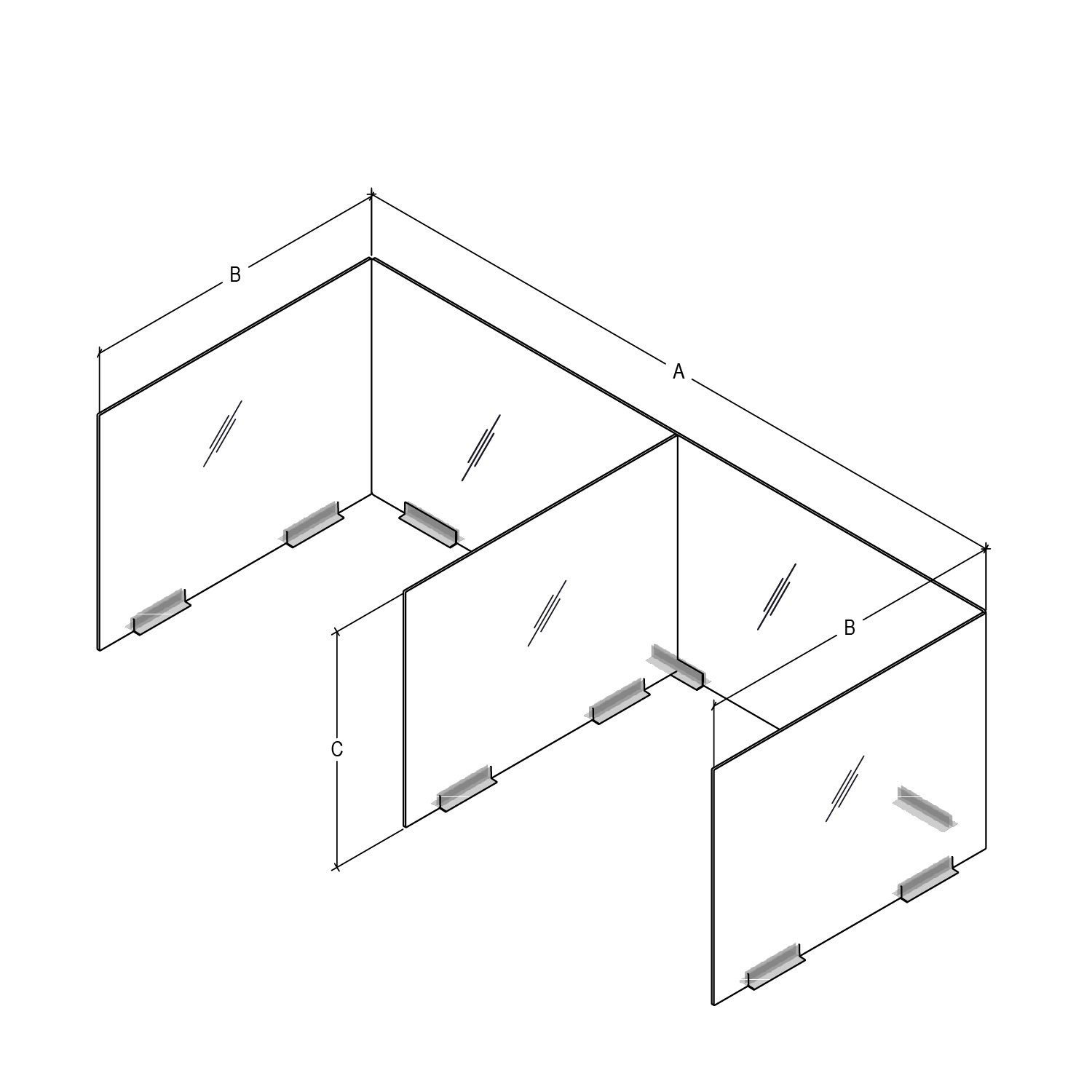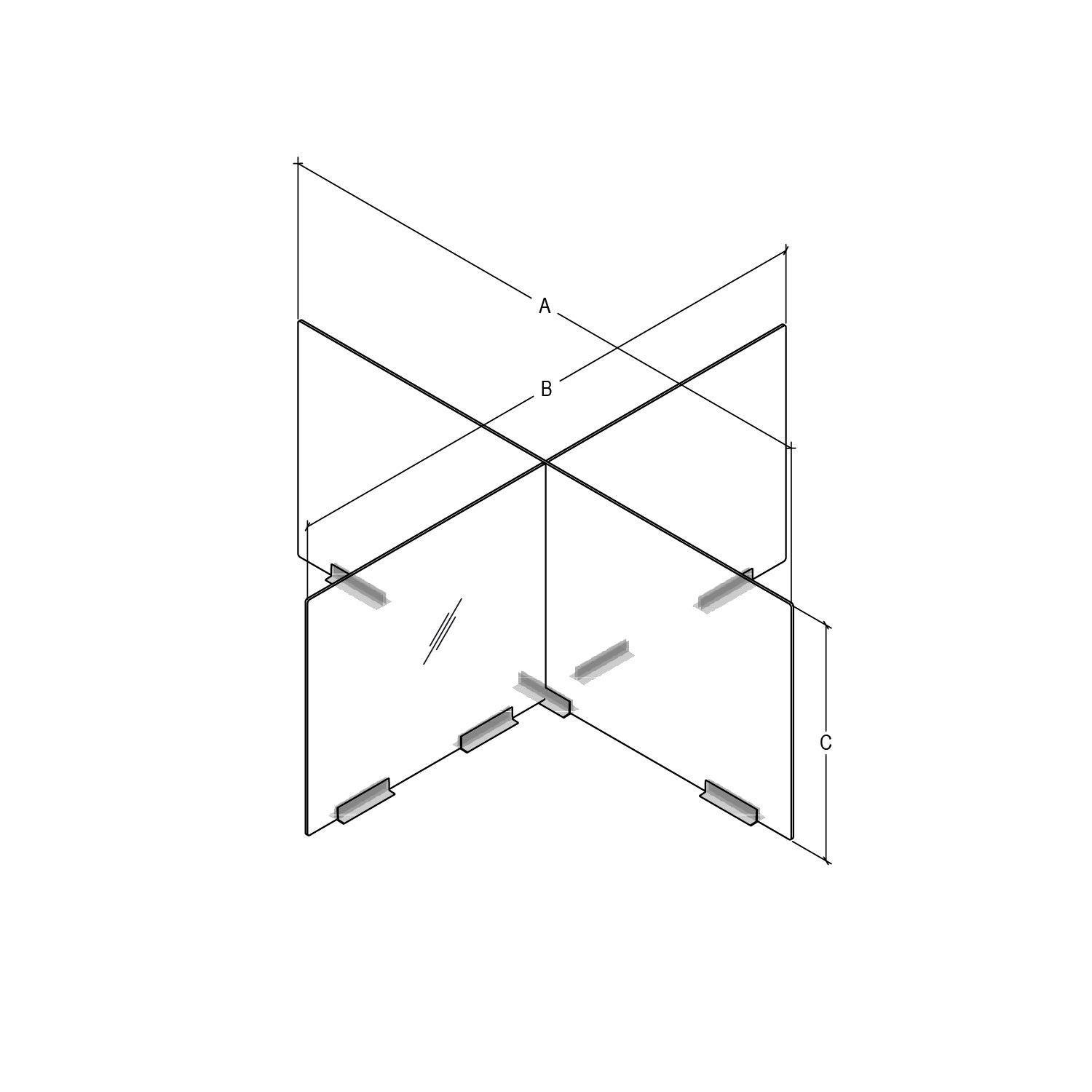4 Strategies to Mitigate COVID-19 Risks in the Workplace
Karl Elhen
Dec 23, 2020 3:40:23 PM
With the announcement of viable COVID-19 vaccines, many businesses are gearing up for their employees to return to the office. Although there is an end in sight for the various lockdown measures across the country, public health officials are still recommending business owners take preventative measures to reduce viral exposure for their employees.
In this blog post, we’ve outlined some specific tactics business owners can employ to mitigate risks as much as possible in their offices, including hybrid work models, physical distancing protocols, and the installation of polycarbonate partitions.
1. Use a hybrid model to alternate work-from-home and office schedules
Regarding the capacity of people in enclosed spaces like offices and stores, the ideal scenario is to have all employees work from home to limit interactions and potential exposure time. However, that recommendation is unrealistic for many businesses that require (at least some) people on-location to remain operational.
Many companies have found success using a hybrid work model that combines work-from-home and in-office schedules where employees are separated into two (or more) groups and rotate on regular intervals.
For example, Group A works from home for the first two weeks of the month while Group B is in the office, and for the last two weeks of the month, both groups swap.
2. Limit interactions between employees
If your business cannot maintain its operations with telework arrangements and requires employees’ physical attendance, you need to limit person-to-person contact as much as possible.
Canada’s public health recommendations include:
- Reduce in-person attendance at meetings by using video conferencing technology (like Zoom or Google Meets)
- Establish two meters of separation between employees and/or clients in reception areas, meeting rooms, and workstations
- Contactless business models (e.g. drive-throughs and curb-side pick-ups) should be adopted wherever possible
You should also consider having employees stay at their desks as much as possible (including taking their lunch and coffee breaks) to limit potential contact throughout the office. They should also have access to additional hygienic solutions like hand-washing stations, hand sanitizer, and disinfecting wipes nearby for when they have to leave their work area.
3. Optimize ventilation and airflow in your office wherever possible
The Public Health Agency of Canada recommends increasing ventilation in enclosed spaces whenever possible. The general recommendation is to allow for an influx of fresh outdoor air by opening windows are moving activities outside if possible. However, in the dead of Canadian winter, opening windows or taking your laptop outside is not exactly ideal.
Paying close attention to your HVAC system is crucial in this case. Using fans and air purifiers around the office helps tight spots, but it’s better if the air pulls from outside of the building rather than recirculating what’s already inside.
4. Separate workstations with office partitions
In offices where the layout’s physical dimensions limit the ability to distance employees from each other or their clientele, The Public Health Agency of Canada recommends creating physical barriers between people to mitigate exposure risk.
Of course, the easiest way to do this is to have employees isolated in their own rooms or offices where they won’t be in contact with other people. However, in situations where workspace is at a premium, you can install office partitions (sometimes referred to as privacy panels or social distancing panels) to separate individual workstations.
For example, our moodprivacy panels are easy-to-install partitions that can be used in various environments around an office.
Clip-on desk dividers can be installed to desks without having to drill, nail, or glue anything down, and our collections come in both clear and frosted options for those who may want to increase privacy.

Free-standing dividers use sturdy, framed polycarbonate sheets to provide top-to-bottom divisions between workstations. This solution works well in situations where two desks are joined together in one space instead of individual cubicles.

Suspended privacy panels are hung from the ceiling, and they are especially useful in areas where clip-on dividers or free-standing partitions aren’t feasible, e.g., computer labs, reception areas, or work desks where clips can’t be installed.

Alternatively, for workspaces with unique configurations, we’ve created shaped table-mounted partitions that can fit virtually any layout where multiple workstations are in close proximity.
 |
 |
For example, an “E” shaped table mount for shared tablespaces and an “X” shaped partition for desk pods organized into quadrants.
Everyone has a role to play
Restrictions differ from province to province (and in some cases, between regions within the same province) regularly, and that makes it challenging to keep track of the most up-to-date recommendations. The main thing you can do as a business owner is to ensure your employees know the safeguards put in place to keep them safe at work.
At Rampart, the part we play in protecting public health is recommending panel solutions to businesses that allow them to create privacy and separation between employees without isolating them entirely.
You can explore our moodprivacy solutions to find economical office and cubicle dividers that you can easily install in your business when your employees return to the office.
